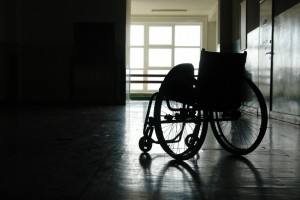The general rule for compensatory damages for personal physical injuries is that they are tax free under Section 104 of the Internal Revenue Code. Yet exactly what is physical is not so clear. For example, if you make claims for emotional distress, your damages are taxable. If you claim the defendant caused you to become physically sick, those can be tax free. If emotional distress causes you to be physically sick, that is taxable. The order of events and how you describe them matters to the IRS. If you are physically sick or physically injured, and your sickness or injury produces emotional distress, those emotional distress damages should be tax free. Much of this seems artificial, but wording is very important. Some of the distinctions come from a footnote in the legislative history to the tax code adding the ‘physical’ requirement. It says “emotional distress” includes physical symptoms, such as insomnia, headaches, and stomach disorders, which may result from such emotional distress. All compensatory damages flowing from a physical injury or physical sickness are excludable from income. For example, in Domeny v. Commissioner, Ms. Domeny suffered from multiple sclerosis (MS). Her MS got worse because of workplace problems, including an embezzling employer. As her symptoms worsened, her physician determined that she was too ill to work. Her employer terminated her, causing another spike in her MS symptoms. She settled her employment case and claimed some of the money as tax free. The IRS disagreed, but Ms. Domeny won in Tax Court. Her health and physical condition clearly worsened because of her employer’s actions, so portions of her settlement were tax free.
In Parkinson v. Commissioner, a man suffered a heart attack while at work. He reduced his hours, took medical leave, and never returned. He sued in state court for intentional infliction and invasion of privacy. His complaint alleged that the employer’s misconduct caused him to suffer a disabling heart attack at work, rendering him unable to work. He settled and claimed that one payment was tax free. When the IRS disagreed, he went to Tax Court. He argued the payment was for physical injuries and physical sickness brought on by extreme emotional distress. The IRS said that it was just a taxable emotional distress recovery.
The Tax Court said damages received on account of emotional distress attributable to physical injury or physical sickness are tax free. The court distinguished between a “symptom” and a “sign.” The court called a symptom a “subjective evidence of disease of a patient’s condition.” In contrast, a “sign” is evidence perceptible to the examining physician. The Tax Court said the IRS was wrong to argue that one can never have physical injury or physical sickness in a claim for emotional distress. The court said intentional infliction of emotional distress can result in bodily harm. Notably, the settlement agreement in Parkinson was not specific about the nature of the payment or its tax treatment. And it did not say anything about tax reporting. There was little evidence that medical testimony linked Parkinson’s condition to the actions of the employer. Still, Parkinson beat the IRS. Damages for physical symptoms of emotional distress such as headaches, insomnia, and stomachaches might be taxable. Yet physical symptoms of emotional distress have a limit. For example, ulcers, shingles, aneurysms, and strokes may all be an outgrowth of stress. It seems difficult to regard them all as ‘mere symptoms of emotional distress.’ Extreme emotional distress can produce a heart attack, which is not a symptom of emotional distress. The Tax Court in Parkinson agreed. Medical records and settlement agreement language can significantly help.
To exclude a payment from income on account of physical sickness, you need evidence of making the claim that the defendant caused or exacerbated his condition. In addition, you need to show the defendant was aware of the claim, and at least considered it in making payment. To prove physical sickness, you need evidence of medical care, and evidence that you actually claimed the defendant caused or exacerbated his condition.
The more medical evidence the better. Moreover, if there is a scant record of medical expenses in the litigation, consider what you can collect at settlement time. A declaration from the plaintiff will help for the file. A declaration from a treating physician or an expert physician is appropriate, as is one from the plaintiff’s attorney. Prepare what you can at the time of settlement or, at the latest, before you file your tax return. Do as much as you can contemporaneously.
Whenever possible, settlement agreements should be specific about the tax treatment of your damage award. The IRS is likely to view everything as income unless you can prove otherwise. Try to be explicit in the settlement agreement about the amount you will receive as wages or other taxable and what form they will be reported on. You do not want to be surprised by receiving a W-2 or a 1099 the following January of the year after the settlement.
If you have any questions, feel free to call Gregory Spadea at 610-521-0604. The Law Offices of Spadea & Associates, LLC provides year round tax planning and tax return preparation.










